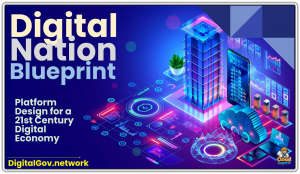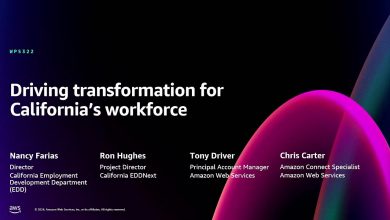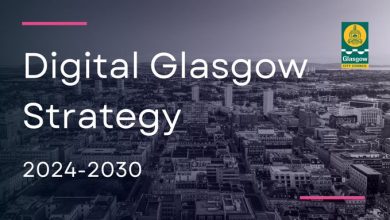The Story of Smart Nation Singapore
The Smart Nation initiative aimed to harness technology to improve the lives of citizens, create economic opportunities, and build a more resilient and sustainable future.
 The story of Smart Nation Singapore is a fascinating tale of how a small city-state transformed itself into one of the world’s most technologically advanced and digitally connected societies.
The story of Smart Nation Singapore is a fascinating tale of how a small city-state transformed itself into one of the world’s most technologically advanced and digitally connected societies.
Launched in 2014 by the Singapore government under the leadership of Prime Minister Lee Hsien Loong, the Smart Nation initiative aimed to harness technology to improve the lives of citizens, create economic opportunities, and build a more resilient and sustainable future.
The program is described in detail in this research report.
The Vision
Singapore, a nation with no natural resources and a land area of just over 700 square kilometers, has long relied on innovation and forward-thinking policies to thrive. By the early 21st century, it had already established itself as a global financial hub and a leader in urban planning. However, with rapid advancements in digital technology and the rise of smart cities worldwide, Singapore saw an opportunity to leap further ahead.
The Smart Nation vision was built on three pillars: Digital Economy, Digital Government, and Digital Society. The goal was to integrate technology seamlessly into every aspect of life—making the city more livable, efficient, and inclusive.
Key Milestones
- Digital Infrastructure: Singapore invested heavily in foundational technologies like high-speed broadband and 5G networks, ensuring near-universal connectivity. The nation also rolled out a nationwide sensor network under its “Smart Nation Sensor Platform,” enabling real-time data collection to manage everything from traffic to environmental conditions.
- Cashless Society: One of the most visible successes was the push toward a cashless economy. Initiatives like the PayNow platform and the widespread adoption of mobile payment systems (e.g., GrabPay and QR code payments) made transactions faster and more convenient. By 2025, cash usage had plummeted, with even hawker stalls—traditional open-air food vendors—embracing digital payments.
- Smart Mobility: Traffic congestion, a challenge for any urban center, was tackled with intelligent transport systems. Autonomous buses and taxis began trials in areas like Punggol and Jurong, while the Land Transport Authority used AI to optimize traffic flow and reduce commute times. The Electronic Road Pricing system was upgraded with satellite-based technology, making it more dynamic and efficient.
- Healthcare Innovation: The National Electronic Health Record (NEHR) system allowed seamless sharing of patient data across healthcare providers, improving care quality. Telemedicine boomed, especially after the COVID-19 pandemic, and wearable devices linked to AI systems helped monitor chronic conditions among the aging population.
- Digital Identity: The SingPass system, a secure digital ID for citizens, became the backbone of government services. By 2025, it was used for everything from tax filing to applying for public housing, reducing bureaucracy and enhancing accessibility.
- Sustainability: Smart Nation aligned with Singapore’s green goals. Smart grids optimized energy use, while IoT-enabled buildings reduced waste. The HDB (Housing and Development Board) rolled out “smart towns” like Punggol, where solar panels, automated waste collection, and urban farming became the norm.
Challenges Along the Way
The journey wasn’t without hurdles. Privacy concerns arose as data collection expanded—citizens worried about surveillance and the misuse of personal information. The government responded with strict data protection laws, like the Personal Data Protection Act (PDPA), and emphasized transparency. Another challenge was the digital divide; while most Singaporeans embraced technology, some elderly and low-income residents struggled to keep up. Programs like “Seniors Go Digital” were launched to bridge this gap, offering training and subsidies for devices.
Cybersecurity also became a priority as the nation digitized. High-profile cyber-attacks, like the 2018 SingHealth breach, underscored the risks. Singapore doubled down on building a robust cyber-defense ecosystem, training specialists and partnering with global tech firms.
Global Recognition
By 2025, Smart Nation Singapore had become a model for the world. Cities from Seoul to San Francisco looked to its playbook—blending top-down governance with private-sector innovation. The IMD Smart City Index consistently ranked Singapore at the top, praising its citizen-centric approach and ability to turn data into actionable solutions.
The Culture Shift
Perhaps the most profound change was cultural. Singaporeans, already known for efficiency and pragmatism, became a nation of tech adopters. From preschoolers coding in schools to seniors using apps to book community center activities, technology wove itself into the social fabric. The government fostered this shift by encouraging startups, attracting tech giants like Google and Alibaba, and hosting events like the Singapore FinTech Festival.
Looking Ahead
Smart Nation Singapore continues to evolve. Plans for quantum computing trials, deeper AI integration, and climate tech innovations signal that the initiative is far from complete. The vision remains bold: a nation where technology empowers every citizen, solves urban challenges, and ensures prosperity for generations to come.
In essence, Smart Nation Singapore is a story of ambition meeting execution—a testament to how a small island can punch above its weight by embracing the future with open arms.




